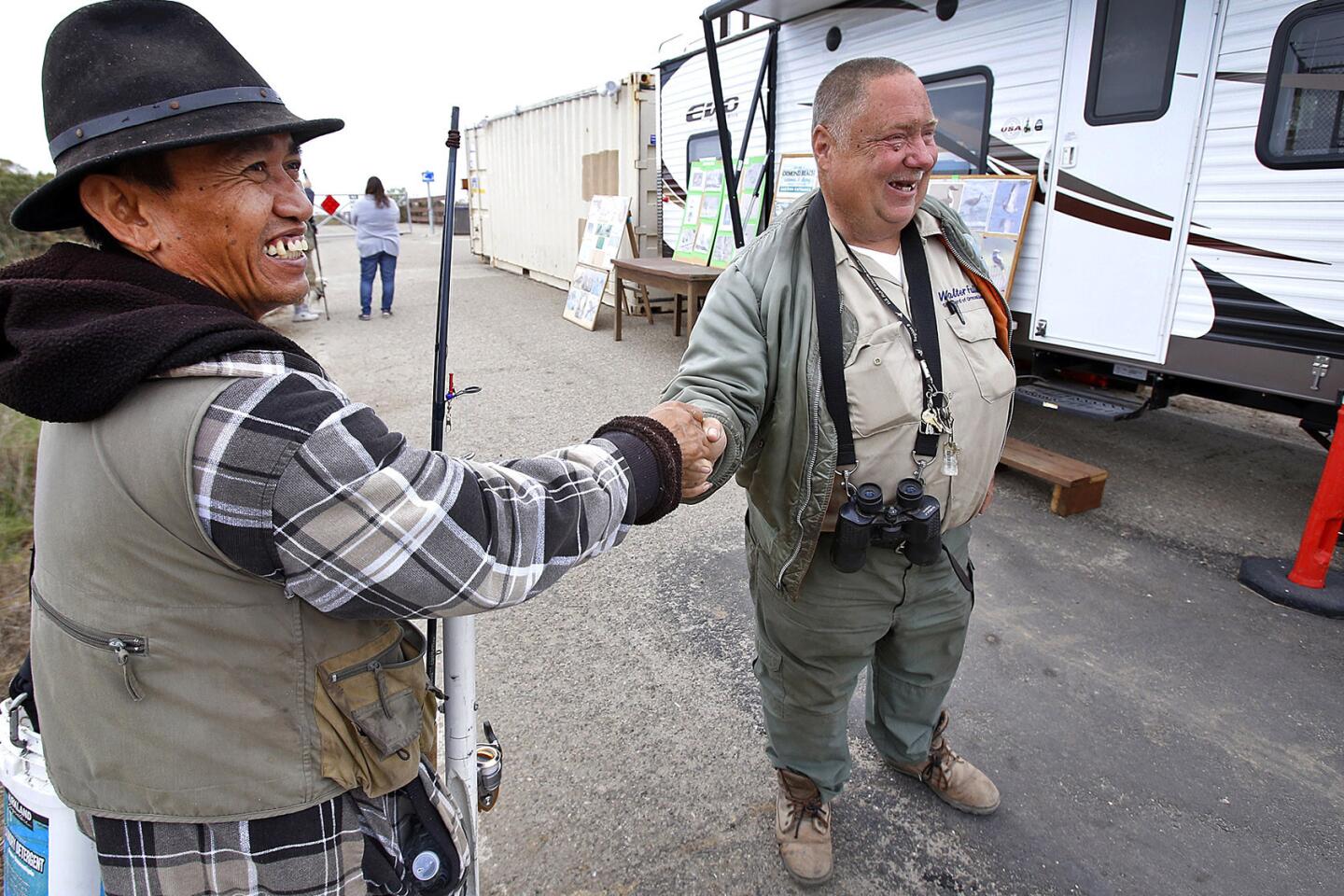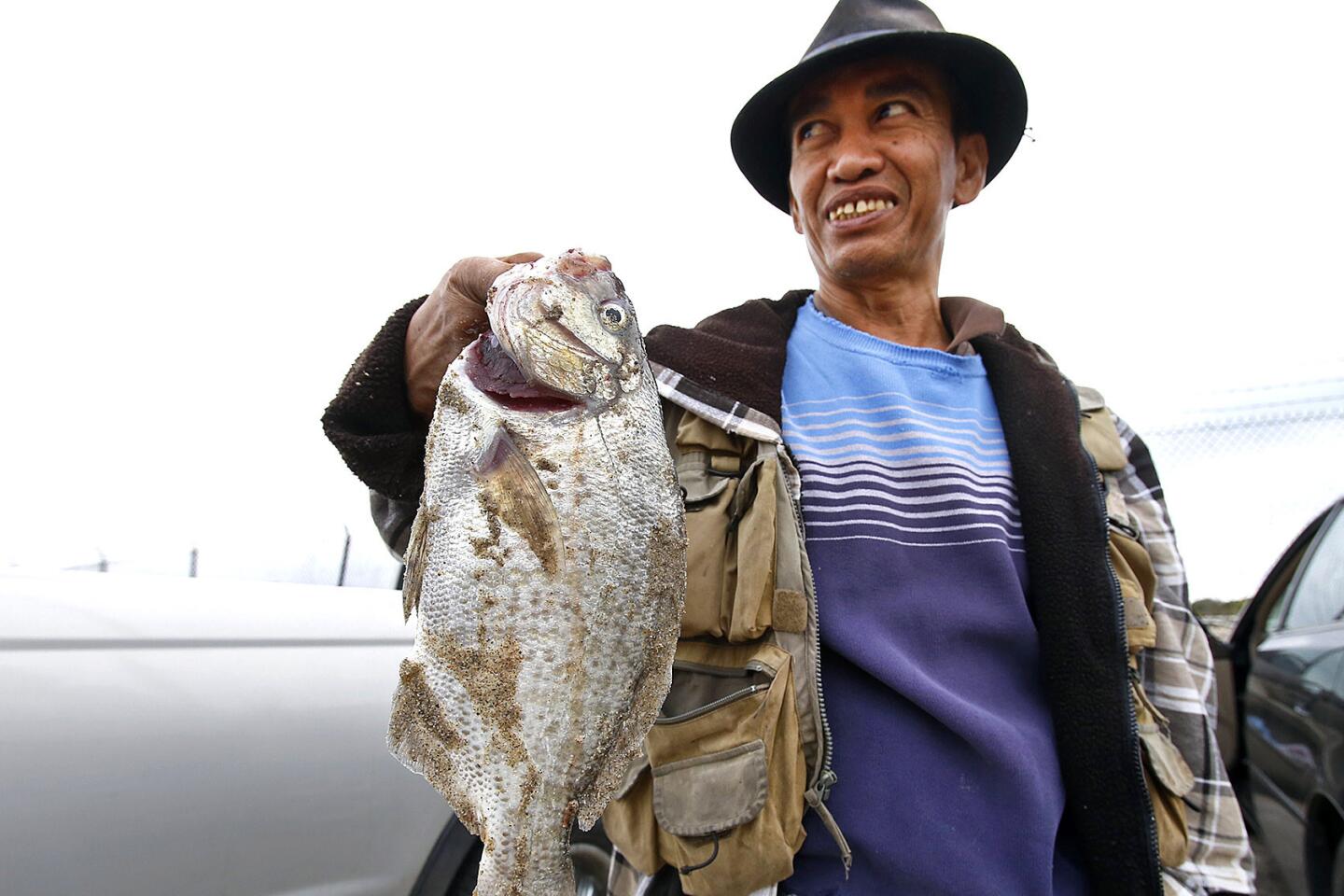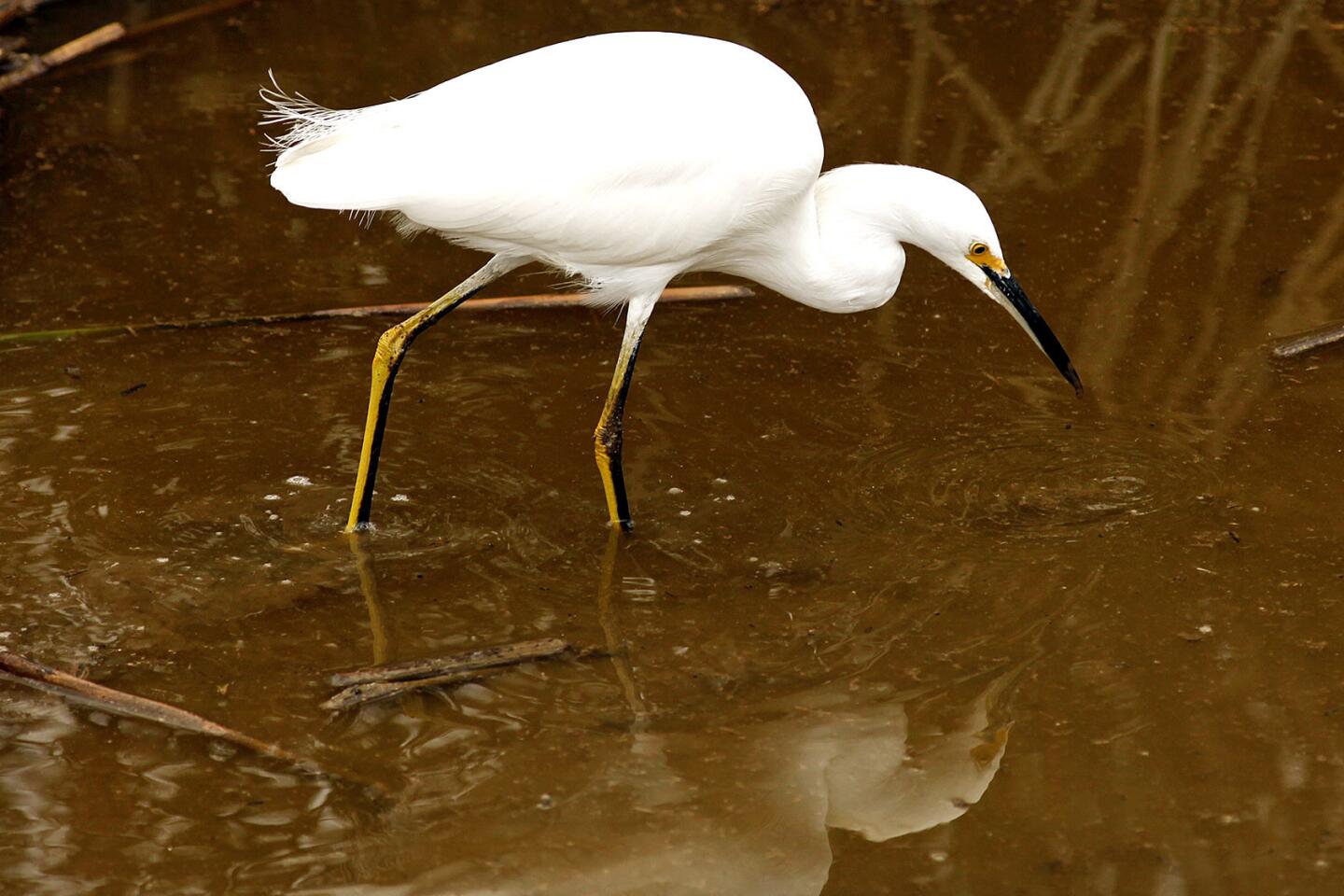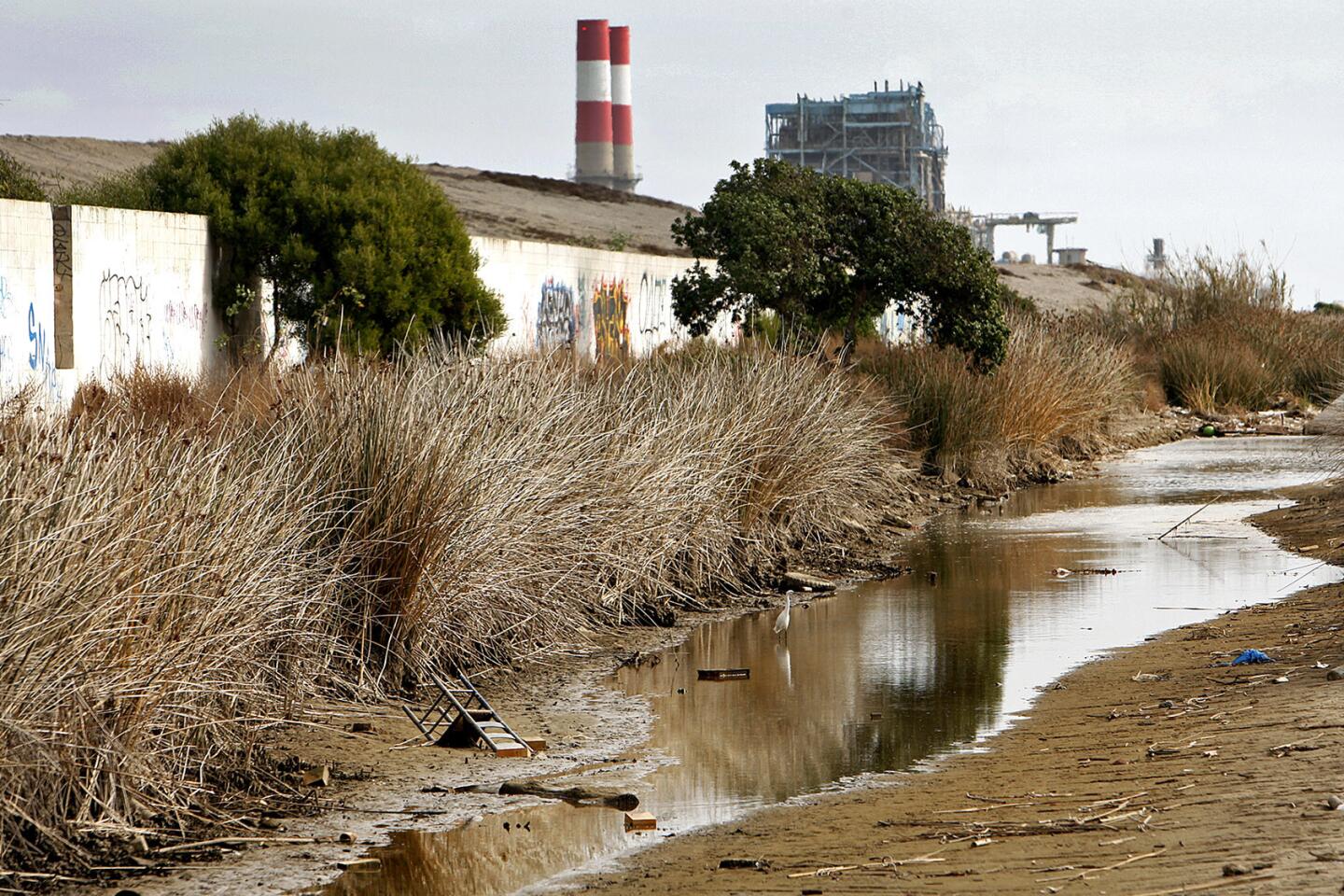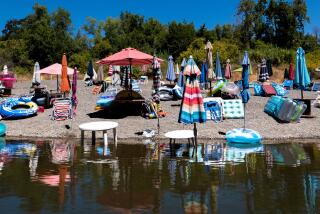Great Read: A humble guardian watches over Ormond Beach
- Share via
It began with an albino parakeet named Whitey.
As a child, Walter Fuller would play Johnny Cash on the record player in his bedroom and let Whitey out of his cage. Whitey would fly around and alight on the back of a chair or the corner of a nightstand and bob his head to the rhythm.
After Whitey came a cockatoo, an Amazon parrot and a myna bird. Then a boa constrictor and a python.
In the Ojai home where Fuller was raised by his mother and grandparents, there were always animals. Lots of them. But none captured Fuller’s imagination like the birds.
When a high school teacher asked him to write an earth sciences report, he chose the golden eagle as his subject. He got out his field guide and his binoculars and headed to Gridley Trail in the mountains above Ojai.
He never found an eagle. Still, the assignment set him on a course he would follow the rest of his life.
“That was what started my bird-watching days,” said Fuller, now 60. “From that point on, I was hooked.”
One day in 1995, he decided to drive down a south Oxnard street on his lunch break. At the end, he discovered Ormond Beach.
The beach, one of the premier bird-watching spots on the Pacific Flyway, hosts more than 200 migrating species and serves as a nesting ground for the rare Western snowy plover and the California least tern. Birders from all over the world visit the two-mile swath of coastline.
“I found my spot,” he said. “I knew this is where I could study birds the rest of my life.”
Nearly 10 years later, Fuller spends every day of the year at the beach — holidays included. He spends nights there, too, in a small trailer provided by the city. And he does it without pay.
Fuller has become the guardian of Ormond Beach.
::
Ormond Beach is one element in an ambitious restoration project underway by the California Coastal Conservancy that experts say could one day become the largest coastal wetlands in Southern California, spanning nine miles of largely undeveloped waterfront from Port Hueneme to Point Mugu.
Heavy industry drained and degraded the wetlands and lagoons over the last 50 years.
A tall slag heap — a remnant of the closed Halaco steel recycling plant — is on the north side of the beach, part of a Superfund hazardous waste cleanup site overseen by the federal Environmental Protection Agency. A power station topped with two red-rimmed smokestacks is nearby. The naval base at Point Mugu is steps away from Fuller’s trailer on the south side of the beach, at the end of a two-lane farm road.
Many say Fuller is carrying on the legacy of the late Jean Harris and Roma Armbrust, activists who for decades fought off efforts to build marinas, apartments, resorts and theme parks on the beach north of Malibu.
“Their spirit lives on in Walter,” said Nancy Pederson, who runs a nearby marine education program for youths. “Walter has been the third leg of keeping that area the way it is.”
Soon after Fuller discovered Ormond Beach, he lost his job doing maintenance at Point Mugu because of cutbacks. But he continued to work as a janitor for a private company and visit the beach daily. Although he loved the birds, he disliked much of the human activity he saw — car break-ins, drug deals, sex in the bushes and trash in the canal. Once, he found a stripped car in the parking lot.
So Fuller, a widower, took it upon himself to patrol the beach after work each day. On some nights, he would sleep in his Ford Explorer in the parking lot. A former private security guard, his reflexes kicked in.
“Once a security guard, always a security guard,” said Fuller, a stout man who customarily wears a short-sleeved khaki shirt, green cargo pants and worn leather boots. Binoculars dangle from his neck. “That’s just what I do.”
If someone behaved inappropriately, he asked them to leave, but often his presence was deterrent enough. He called the police when necessary. Eventually, the incidents died down.
In 2008, the city provided a shipping container for Fuller. He slept in that until June, when the city delivered the trailer and made him the official caretaker, an unpaid position, with a three-year contract.
Fuller gets by on donations from friends and supporters, who leave him food, magazines, sometimes a little cash, and other tokens of their appreciation. His needs are simple — an occasional lunch at Del Taco is one of his few indulgences.
“Walter is a little too humble for his own good,” said Pederson, who has been visiting Ormond Beach since the 1960s. “He has done more work out there than anybody. He doesn’t realize how special he is and how special what he’s done is.”
::
Fuller opens the gate to the parking lot each morning at 5 for those who want to get a head start on fishing and locks it at dusk. He’s the official greeter, janitor, tour guide and question answerer. He keeps a daily log of visitors and whether they are swimming, surfing, bird-watching, picnicking or just relaxing.
If he talks to them, he jots down their hometowns, noting if they are from another country. If they have a dog, he makes sure that it is leashed. And of course, he keeps a detailed account of the birds he sees.
His findings are contained in a weekly “Walter Report” delivered to the Oxnard City Council by one of his friends, and his documentation is used by Point Mugu officials to keep updated information on the number and types of birds that use the military base and surrounding property.
Earlier this year, the city presented him with a community service award, one of numerous accolades bestowed on him.
“He deserves so much more,” Oxnard City Councilwoman Carmen Ramirez said. “He’s taken on the duties of protecting the coast and the beach. We are lucky to have this one gentleman to help us.”
Ramirez is trying to arrange for volunteers to fill in for Fuller once in a while so he can take some time off. The beach had nearly 12,000 visitors this summer, a record, Fuller said.
Perhaps his most satisfying task is helping children appreciate and respect nature, much like his mother and grandparents did for him.
“So many kids today, all they do is play the Game Boy,” he said. “They don’t know how to swim or build a bonfire, common outdoor things. Here, they get to see nature firsthand. It’s beautiful.”
Fuller’s mother and grandparents have passed away. His wife of seven years, Mary, died of leukemia after they had two children. His daughter and son are grown now, and he has two grandsons.
Fuller lives alone on the isolated, wind-swept beach, but he is seldom lonely.
“Look at this,” Fuller said, standing on the sandy path leading to the beach, with the Santa Monica Mountains to the right, the Topatopa Mountains to the left and the Pacific Ocean at his back.
“I get to see this every day,” he said. “It’s tranquillity out here. And you don’t have to pay for it.”
One recent day as he made his rounds, he looked up at the power line and couldn’t believe what he saw — a bald eagle. It was tagged No. 67 and had flown from the rookery at Anacapa Island, about 11 miles away.
“I had looked so hard for an eagle in 1972 and never saw one,” he said, shaking his head in amazement. “I felt like I had come full circle.”
Twitter: @amcovarrubias
More to Read
Sign up for Essential California
The most important California stories and recommendations in your inbox every morning.
You may occasionally receive promotional content from the Los Angeles Times.

